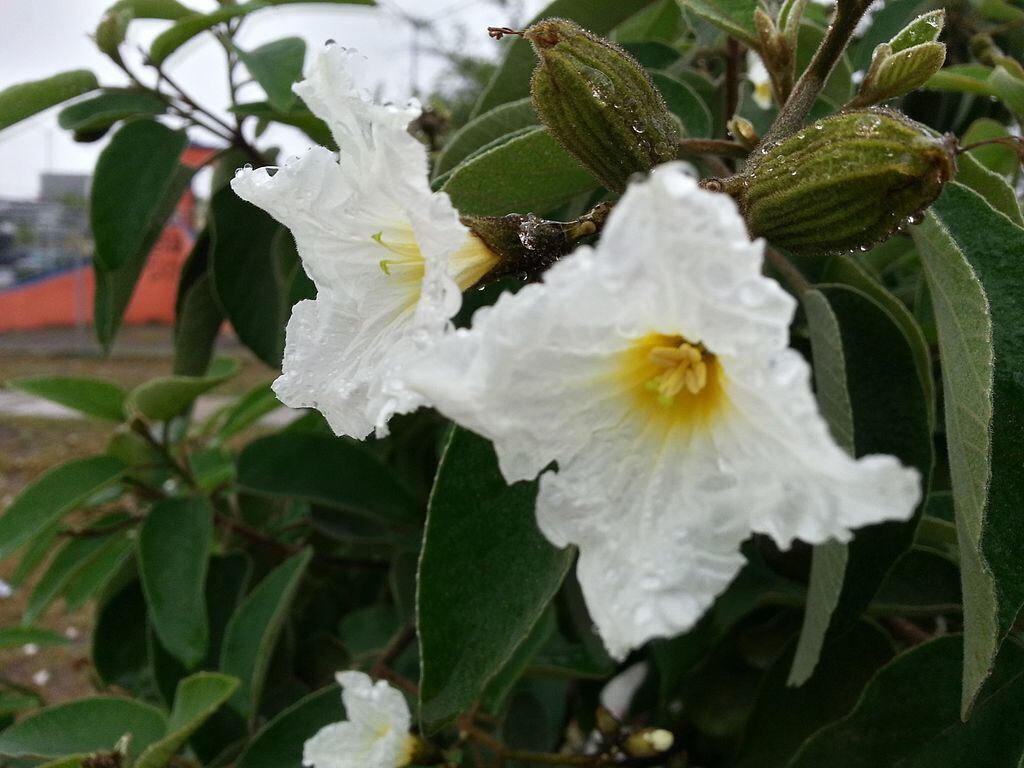Writing in a chapter of Active Antimicrobial Food Packaging, researchers from the Bioengineering Department of Monterrey Institute of Technology and Higher Education in Mexico City said they had developed biopolymer active packaging, plastic active packaging and polyvinyl alcohol films from sorghum and blue corn that could then be enhanced with antimicrobial agents, including known plants and compounds like garlic, oregano and nisin but also lesser-known native Mexican plants.
From medicine to packaging - Mexico and its 'floristic richness'
The researchers investigated four native Mexican plant extracts: the flowering anacahuita (Cordia boissierie), the arid zone dweller governor (Larrea tridentata), an evergreen shrub ash (Leucophyllum frutescens), and the perennial tree pirul (Schinus molle). All four plants , they said, were traditionally used medicinally to treat various ailments, including urinary tract disorders; fevers and colds; respiratory diseases; bronchial problems; and bacterial diseases, among others.
“As Mexico is a country that stands out for its floristic richness and taking into account the extensive knowledge of medicinal plants that since the pre-Columbian Era conserve Mexicans, mainly those of rural communities, it was natural that we were interested in the study of incorporation of some of them as active substances to be included in polymer matrices for food packaging,” the researchers wrote.
Each of the plant extracts were tested against the Gram-positive bacterium Staphylococcus aureus – “recognized as one of the main pathogenic agents for humans”, they said, and importantly, had “an extraordinary ability to develop resistance to antimicrobials”.
The researchers said that medicinal plants were increasingly considered a potential source of new drugs against the bacterium because of their phytochemical content and little toxic effect.
A 'great antimicrobial potential'
After testing the four extracts against Staphylococcus, findings showed all of them exhibited antimicrobial activity, whether bactericidal or bacteriostatic, and the activity was “greater than that of the controls”. Controls used were: 70% ethanol, kanamycin at a concentration of 50 mg/ml and cholramphenicol at a concentration of 34 mg/ml.
“The best inhibition results were obtained from the extracts of L. tridentata and S. molle plants. These plants represent a great antimicrobial potential; because as a plant that develops in arid conditions, it has a richness based on its biological specialization, since it is the product of thousands of years of physiological adaption for its survival.”
Importantly, all of the extracts could be incorporated “with no effect on the formation” into active antimicrobial PVOH biofilms, the researchers said. “It was found that the higher the concentration of the extract in the biofilm, the greater the inhibition against S. aureus.”
Findings also showed the extracts had antimicrobial activity against Gram-negative bacteria, such as Salmonella and E. coli.
“Although these plants can be purchased in some traditional local markets for medicinal use, their potential as a source of natural antimicrobial agents for use in active food packaging must be further investigated,” the researchers concluded.
Source: Active Antimicrobial Food Packaging
Published online ahead of print, DOI: 10.5772/INTECHOPEN.80779
“Using Native Plants of the Northeast of Mexico for Developing Active Antimicrobial Food Packaging Films”
Authors: C. Rojas, JA. Rocha and CP. Saenz

